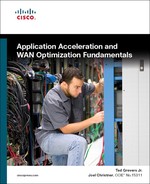
The following list of ten information resources is most useful to network administrators and those seeking additional technical information about protocols and products. Sources include hardware and operating system vendors, application vendors offering tools to aid administrators, and IEEE-controlled resources. A description for each resource was obtained from within the resource’s respective website.
Cisco IOS Software is the world’s leading network infrastructure software, delivering a seamless integration of technology innovation, business-critical services, and hardware platform support. Cisco IOS technologies include NetFlow, Quality of Service, IP Service Level Agreements, and many other value-added, network-oriented capabilities that provide foundational components for ensuring application-fluent networks.
Learn more about Cisco IOS Technologies at http://www.cisco.com/en/US/products/ps6537/products_ios_sub_category_home.html
Cisco product documentation is a comprehensive library of technical product documentation. The online documentation enables you to access multiple versions of installation, configuration, and command guides for Cisco hardware and software products. With the online product documentation, you have access to HTML-based documentation. Certain products also have PDF versions of the documentation available.
Download documentation at the following URL: http://www.cisco.com/public/support/tac/documentation.html
NetQoS provides network performance management products and services that optimize the performance of enterprise networks. Information is tailored to the needs of network engineering, operations, and management. NetQoS products help IT organizations optimize their network infrastructure.
Visit NetQoS at http://www.netqos.com/
Binary Increase (BIC) TCP is one of many advanced TCP implementations that addresses performance problems associated with TCP in WAN environments as well as high-speed networks. BIC uniquely provides bandwidth scalability while also providing connection fairness among numerous packet loss ranges and scenarios where there is a latency disparity among connections.
Learn more about BIC TCP at http://www.csc.ncsu.edu/faculty/rhee/export/bitcp/
The Low Bandwidth File System (LBFS) is a network file system that helps to improve performance and minimize network utilization between clients and servers. LBFS leverages cross-file similarities to minimize bandwidth consumption by using content chunking and indexing, thereby removing the need to transmit data that has been previously seen.
You can find the home page for LBFS at http://www.fs.net/sfswww/lbfs/index.html
The Requests for Comments (RFC) contain technical and organizational notes about the Internet and the applications and protocols used on the Internet.
Visit the following website to search for a specific RFC: http://www.rfc-editor.org/rfcsearch.html
Microsoft TechNet is a program that provides comprehensive technical resources and information about Microsoft products, along with solution design, implementation, management, and troubleshooting.
Learn more about TechNet at the TechNet home page: http://technet.microsoft.com/en-us/default.aspx
Hewlett-Packard’s website allows users to search for, browse, and print the latest technical documentation for many HP software and hardware products. The website provides two main ways to access documentation: by topic area or OS release.
Access HP technical documentation at http://docs.hp.com/
Red Hat documentation is available in HTML, HTML tarball, and PDF formats. Some of the latest manuals are also available in RPM format for easy installation.
Access Red Hat product documentation at http://www.redhat.com/docs/
IANA’s list is used in RFC 793 to name the ends of logical connections that carry long-term conversations. For the purpose of providing services to unknown callers, a service contact port is defined. This list specifies the port used by the server process as its contact port. The contact port is sometimes called the “well-known port.” This list is updated frequently.
Access the list at http://www.iana.org/assignments/port-numbers
